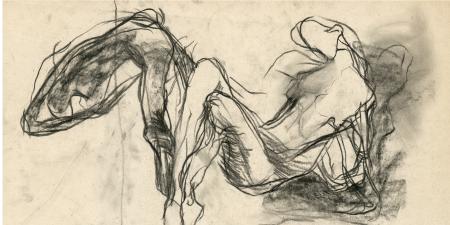Abstract
This case highlights a dilemma for interprofessional trainees facing a traditional health professions hierarchy rather than an interprofessional collaborative practice culture within the clinical setting. In the case, the trainee must determine the best way to confront the attending physician, if at all, as well as the best way to mediate the situation with fellow health professions trainees and team members. The commentary provides guidelines for interprofessional collaborative practice as outlined by the Interprofessional Education Collaborative competencies, including determining team members’ roles and responsibilities, providing clear communication, adopting clinical huddles, and embracing a sense of inquiry during times of conflict. Role modeling of interprofessional collaborative practice by faculty is crucial in training a future generation of health care professionals who can continue to improve patient outcomes and quality of care.
Case
LaBecca is a fourth-year medical student working in a primary care clinic. Her medical school has recently changed its curriculum to provide medical students with opportunities to learn and work collaboratively with nursing students. LaBecca is paired with a nursing student, Brooke, in the office of Dr. Wilson, a senior internist on the faculty. Dr. Wilson has never before had a nursing student in the clinic. When LaBecca and Brooke arrive for the first day at the clinic, Dr. Wilson greets them warmly and then tells them, “As you both know, while nurses are a vital part of the team, physicians ultimately run the show. LaBecca, this is an opportunity for you to develop your leadership skills. Brooke, I’m going to have LaBecca delegate tasks to you; please follow her instructions.”
Gemma, the nurse who typically works with Dr. Wilson, is busy with a patient and is not included in this orientation. Brooke is disappointed to hear Dr. Wilson’s message, especially without Gemma present. LaBecca notices Brooke’s disappointment; she feels awkward and isn’t sure how to respond. She admires Dr. Wilson and wants to forge a good relationship with him, and it seems to her that questioning his ideas about team members’ roles might cause unnecessary conflict at the outset of the rotation. She’s not sure how to work with Dr. Wilson and Brooke in the upcoming clinic sessions.
Commentary
Health professions education is moving to an interprofessional training and care delivery model that requires learners and their faculty to adopt new ways of collaborating with professionals outside their own discipline, with whose roles and responsibilities they might not be familiar. This means questioning traditional professional hierarchical structures and being open to shared leadership. In this case, a learner is put in the difficult position of contemplating whether to challenge the authority of an attending faculty physician, a scenario that is and will continue to be a common one as faculty and students learn to work collaboratively with colleagues outside their profession. Because LaBecca is a fourth-year student, let’s suppose that she has clerkship experience with nurses in clinical settings, has learned how to collaborate in the workplace, and understands that physicians and nurses function best as a team without the hierarchy presumed by Dr. Wilson. She might not, however, have worked with nursing students in the past, and most likely has not supervised one.
Responding to Potential Conflict
LaBecca could respond in a number of different ways to the potential conflict set up by Dr. Wilson’s orientation. There are the two obvious and opposite reactions: if she is guided by her growing belief in the value of collaborative, team-based care, she can defy Dr. Wilson’s instructions but might worry that doing so could affect his evaluation of her and, possibly, limit her future opportunities. If she compromises her values and goes along with Dr. Wilson’s presumption of medical dominance in clinical settings, she puts her relationship with him above the team’s goal, which is working together to provide patient-centered care. A range of possible actions, however, lies between these stark opposites, depending upon with whom LaBecca works to resolve the developing tension and when and how she does so.
Approaching the Team Leader
LaBecca likely cannot avoid talking with Dr. Wilson about his instructions. This conversation must be timely; otherwise, it would result in a missed opportunity. She might address him directly and with a sense of inquiry about the conflicting models of teamwork she is confronting. She should identify a place and time to talk with Dr. Wilson, without putting him on the spot publicly. LaBecca must be respectful, nonthreatening, and maintain a sense of inquiry that allows Dr. Wilson to engage constructively rather than default to defensive posturing. She might say, for example, “Dr. Wilson, what would you think if Brooke and I collaborated on the patient’s care as interprofessional team members, rather than my taking the role as the leader and Brooke the role of the follower?” Her verbal and nonverbal communication should convey curiosity and interest. She should mention past experience working with nurses and how doing so without one profession’s subordination to another facilitated the team’s functioning. She can mention her surprise at discovering the many aspects of patient care in which nurses take the lead, such as assessing and educating patients, providing continuity of care with their families, and understanding the psychosocial influences on care decisions [1]. LaBecca can add that the bedside nurses with whom she has worked had the opportunity to hear from all specialists and caregivers throughout the day and thus had more complete understandings of patients’ treatment plans and responses to treatment than any of the individual physicians.
LaBecca should listen as much as she speaks, allowing Dr. Wilson to respond without interrupting him. She can demonstrate that she is actively listening by summarizing what he says. If he is firm in his position that she direct the nursing student, LaBecca can acknowledge his position and then mention Brooke’s discomfort with the plan and her own desire to demonstrate respect for Brooke’s role. She might ask whether they can try the more collegial relationship instead of a hierarchical one on a trial basis, by defining their responsibilities for the patient and communicating with each other about them. Throughout the conversation, LaBecca should be attentive to her nonverbal communication, maintaining good eye contact and nodding to indicate that she understands what Dr. Wilson is saying.
Approaching Other Team Members
At the same time, LaBecca might welcome the viewpoints of her nursing colleagues. She might follow up with Brooke, acknowledging her disappointment in the hierarchical approach, explaining her own preference for a collaborative plan, and possibly letting Brooke know that she spoke to Dr. Wilson about it. She might also raise the topic of collaboration with her nursing colleagues. Doing so could promote open dialogue, maintain focus on their shared common goal of good patient care, and establish respectful relationships. For example, LaBecca might ask Brooke about how she and her preceptor envision the team members’ various roles, so that she can advocate for Brook and enable her to perform duties that fit her role and scope of practice. Although LaBecca is not the leader of this team, in promoting inclusiveness and team members’ buy-in she would be assuming an informal leadership role. She might directly discuss with Gemma how she would like to collaborate and communicate in ways that would allow her to meet the needs of Brooke and their shared patients. In the end, LaBecca must decide how to respond. It will take a collective response on the part of health care professionals—the so-called “village”—to promote a cultural shift: to truly embrace and implement interprofessional approaches that realize the benefits of patient-centered outcomes.
Interprofessional Collaborative Practice
Interprofessional collaborative practice happens “when multiple health workers from different professional backgrounds work together with patients, families, carers and communities to deliver the highest quality of care” [2] and is the current standard. However, barriers such as, differences in professional values, expectations, and roles; concerns about responsibility, and team conflicts could prevent the full implementation of interprofessional collaborative practice [3]. To deliver interprofessional collaborative care to patients, health care teams depend on having open communication and understandings of each professional’s roles and responsibilities in accomplishing the shared goal of delivering good patient-centered care. The Interprofessional Education Collaborative has developed a set of core competencies for interprofessional collaborative practice with four main domains: values and ethics for interprofessional practice, roles and responsibilities of each profession, interprofessional communication, and teams and teamwork [4]. When learners are involved, team members also need an understanding of their specific learning goals, which, again, depends on understanding each profession’s expertise, scope of practice, and roles.
Faculty preceptors have unique duties to teach interprofessional team care to learners and demonstrate collegiality and collaborative practice in clinical settings. A key responsibility of faculty preceptors is to provide professional role modeling. Learners look to faculty to demonstrate how to apply classroom-based learning to real life clinical situations. At the same time, learners observe (and perhaps begin to internalize as normal) unspoken social and cultural norms of behavior and clinical comportment—from the hidden curriculum [5]—during their clinical rotations. These norms might be positive and enhance collegiality or negative and endorse dysfunctional expectations about dominance and subordination. Thus, how an attending physician treats a nursing student in front of a medical student has perhaps greater impact on that medical student’s future interactions with colleagues than all the classroom-based lessons about teamwork.
Applying Interprofessional Collaborative Practice to the Case
A more collaborative Dr. Wilson might use the opportunity of the preclinical “huddle” to express support for and understanding of interprofessional team functioning. The huddle is a “structured, brief (i.e., 5-15 minutes) routine (i.e., daily or multiple times a day) face-to-face communication of a team’s full membership” [6] to facilitate care coordination. Accordingly, Dr. Wilson could initiate a huddle by having each member introduce him- or herself and his or her role in patient care, goals, and proposed care plan for particular patients. Any member of the team might end up leading the huddle, depending on the patient’s care needs. The goal is for each member to have professional equality and a voice. In the present case, Brooke, the nursing student, could state her learning goals for the session. The huddle allows learners and team members in all professions to gain better understandings of each other’s roles and goals as well as how to collaborate in delivering patient-centered care. It also helps them learn to communicate well with each other—for example, by discussing how to share overlapping roles and tasks and by clarifying possible miscommunications that might result from use of professional jargon before they engage in patient care. A collaborative Dr. Wilson can debrief following the session, reviewing the cases and providing additional insight or reflection on how well the team worked together to promote good care for the patient. This review of what worked well and what could be improved upon would enable individual team members to continue to build their skill sets through working together. Ideally, Gemma and Dr. Wilson would have collaborative teaching approaches and a shared understanding of what all of their learners need. Dr. Wilson’s inviting Gemma to the huddle could open up opportunities for learners from both professions to offer feedback and exchange ideas, adding to the value of interprofessional education.
The most ethically problematic aspect of Dr. Wilson’s approach to health professions teaching is revealed when he says, “Physicians ultimately run the show.” This statement is detrimental to the team, especially when it is communicated to the student, Brooke, in the absence of her preceptor, Gemma, and it is bound to have a long-lasting impact on Brooke. It’s not clear whether Dr. Wilson intends to be domineering or intimidating, but if members of the team experience his statement this way, he has undermined the team’s capacity for open, collegial communication. That is, his statement negates the value of interprofessional collaboration, including the fact that leadership can be shared across professions. By not inviting others—especially the nurse and nursing student—to the table, he undermines the value of their contributions to the health care team. This behavior from a senior physician and faculty member reinforces professional bias and historical conflict between professions and counteracts the benefits of interprofessional education and collaborative practice. In the long run, it jeopardizes the quality and safety of patient care [4].
Conclusion
Health professionals must embrace and transition to interprofessional collaborative practice, as well as model such behaviors for their trainees, in order to improve patient outcomes and safety. In so doing they contribute to breaking down the traditional hierarchy within health professions and leveling the playing field for collaboration. Eventually, in the aggregate, clinical preceptors will positively influence the next generation of health professional trainees’ practice of interprofessional collaborative care delivery.
References
- Peyrot M, Rubin RR, Siminerio LM. Physician and nurse use of psychosocial strategies in diabetes care: results of the cross-national Diabetes Attitudes, Wishes and Needs (DAWN) study. Diabetes Care. 2006;29(6):1256-1262.
-
World Health Organization. Framework for action on interprofessional education & collaborative practice. Geneva, Switzerland: World Health Organization; 2010:7. http://apps.who.int/iris/bitstream/10665/70185/1/WHO_HRH_HPN_10.3_eng.pdf. Accessed June 7, 2016.
-
O’Daniel M, Rosenstein AH. Professional communication and team collaboration. In: Hughes RG, ed. Patient Safety and Quality: An Evidence-Based Handbook for Nurses. Rockville, MD: Agency for Healthcare Research and Quality; 2008:chap 33. AHRQ publication 08-0043. http://archive.ahrq.gov/professionals/clinicians-providers/resources/nursing/resources/nurseshdbk/nurseshdbk.pdf. Accessed July 27, 2016.
-
Interprofessional Education Collaborative. Core competencies for interprofessional collaborative practice: 2016 update. Washington, DC: Interprofessional Education Collaborative; 2016. https://ipecollaborative.org/uploads/IPEC-2016-Updated-Core-Competencies-Report__final_release_.PDF. Accessed August 4, 2016.
- Hafferty FW, Gaufberg EH, O’Donnell JF. The role of the hidden curriculum in “on doctoring” courses. AMA J Ethics. 2015;17(2):129-137.
-
Rodriguez HP, Meredith LS, Hamilton AB, Yano EM, Rubenstein LV. Huddle up!: the adoption and use of structured team communication for VA medical home implementation. Health Care Manage Rev. 2015;40(4):287.



